Second day in Maldives and we are totally psyched over checking out Malé. Malé, the capital of the Maldives is rather small, approximately 1.7km long and 1km wide, and located at the south end of Kaafu Atoll. It hosts about 150,000 of the 300,000 odd Maldivian inhabitants and is very close to Hulhumalé, the airport island – just 10 minutes by speedboat or 20 minutes by the older dhonis. There are many direct and frequent boat shuttles to the airport so our recommendation is that if you have time to kill before your departure and don’t want to hang around the airport, hop over to Malé for a look around or to have a nice, affordable, local meal. There are many local restaurants to pick from, and walking around, you will notice many workshops, hardware shops, electrical shops, selling all sorts of things and the center road, Majeedhee Magu road, is where the main shopping area is.
Malé – aerial view
The Maldives
Before visiting the Maldives, I had no idea that it was a country in itself, consists of approximately 1,192 coral islands grouped in a double chain of 26 atolls, spread over roughly 90,000 square kilometers, making it one of the most disparate countries in the world. Most atolls are ringshaped coral reefs supporting five to ten inhabited islands and twenty to sixty uninhabited islands. The average size of these islands are one to two kilometers long and roughly 1.5 meters above sea level. Composed of live coral reefs and sand bars, these atolls are situated atop a submarine ridge 960 kilometers long that rises abruptly from the depths of the Indian Ocean and runs from north to south. Wow.., they sure are pretty when seen from the aerial view, with their characteristic green blue boarders where they meet the ocean!
atolls – aerial view
The Malé International Airport
Maldive’s International airport is located adjacent to Malé on Hulhumalé and is known as the Malé International Airport. Hulhumalé is the first point of contact for every visitor coming in from overseas. The airport terminal is in the center of the island. The meteorological office is just north of that and the harbor can be seen on the left, surrounded by several jetties. We actually had the pleasure of visiting the control tower, as Cumi has a friend working there, but that is another story all together.. (Xian and gang you know who you are.. thanks again for your terrific hospitality!)
the control tower at dusk
ciki loves the view from the control tower!
Malé and Hulhumalé
Xian and friends also told us that during the time the Tsunami hit Maldives, half of the island of Malé was covered in two feet of water. The Malé airport was shut for a period during that time, which was around the year end of 2004. The Maldives is the lowest country in the world, with a maximum natural ground level of only 2.3 metres above sea level, although in areas where construction exists, this has been increased to several metres. To the naked eye, the signs of climate change are almost imperceptible, but government scientists fear the sea level is rising up to 0.9cm a year. Malé itself is surrounded by a 3m-high (9.8ft) wall, which took 14 years to construct.
Driving around Hulhumalé, our Maldivian friends showed us where the projects to reclaim land in Hulhumalé were. Houses, a hospital, a mosque, a school, and electricity, water and telephone systems are up and running on the rectangular island. Fashioned from compacted sand, shredded coral and shell piled on to the natural reef, the reclaimed land is the answer to relieving Malé of its crowded population, as people start to relocate to these newly completed housing projects. In contrast to Malé’s cramped ‘high-rise’ buildings and streets, Hulhumalé is being built with wide boulevards and green spaces – the new buildings all look modern and friendly. Apparently, the first few flats on Hulhumalé were given to the poor- people who have no property.
apartments built on reclaimed land
Hulhumalé .. spot the control tower – aerial view
The Malé fish market
The Maldivian economy is based on tourism and fishing. One fantastic scene you must not miss is the fabulous Malé fish market. Thanks to the Sheraton Maldives gang, we were taken on a guided tour by their own staff, of where the locals hangout. This super busy fish market is located along the beach front to the west of the Republic Square. The area is the main hub of trade and is a hive of activity through out the day. The waterfront and the by-lanes in the area are crowded with people (both locals and tourists alike) and there is also the Local Market selling a range of local products nearby. I totally fell in love with the scene of ‘dhonis’ (traditional fishing boats) unloading dried fish, fresh fruits and vegetables from the atolls at the dock, as they were so colorful and full of life! The way they stacked up close against each other at the docks, is a sight to behold. The catch, mainly tuna are carried across the road into the open-sided market and laid out on the tiled floors. It takes some getting used to if you are squeamish and don’t like seeing the insides of your dinner on the floor, but us Malaysians are used to it, I think. Me and Cumi have had tons of training from Pudu Wet Market in Kuala Lumpur!
As fast as the fish are brought in to the Malé fish market, they are bought and taken away by middle men, and buyers for restaurants and luxury resorts. The market though not 100% sterile, is clean enough, with not much of a fishy smell at all – unlike the stench of the Pudu Wet market. I think that in general, Maldivians are pretty hygienic and they tend to keep their markets as clean as possible, washing the place down daily. I really loved the fish market – it was so alive I could feel the pulse and vibe of the Maldivian fishing trade course through my body as I walked around its halls. The tuna in all its shiny splendour is such a remarkable and beautiful sea-creature, it almost seems a shame to eat it.
Fishy business going on
Sea House Cafe for Dinner
I only entertain that thought for a split second before the rumble in my tummy takes over and it’s time to head on down to the Sea House Cafe for dinner. Thanks to the kind invitation by owner Ismail Faseeh, we had the pleasure of experiencing dining on the open air deck at Seahouse Cafe, a breezy place to chill out over a meal and gaze out into the Indian Ocean. We soon found out from Faseeh, that Sea House Cafe had put together a special menu of authentic Maldivian cuisine that’s outside their normal fare of western dishes, just for us.
We eat the Roshi like the chapati we get at home..
(*food photos at SeaHouseCafe are contributed by @alilfatmonkey)
As it turns out, we were rather at home eating the food, because many dishes were familiar to us, to what we get at home, in Malaysia. What you see in the photo above, is the Roshi – Maldivian chapati or tortilla. The Roshi topped with Pumpkin sambal, fried onions and thelli fai (fried leaves) is a great way to start off the meal. The Lonu Mirus is the Maldivian hot sambal, which is made from chili, coconut, cumin, garlic and curry leaves. It is pretty spicy and adds kick to whatever you’re eating. The Roshi is sometimes shredded up to resemble flat strips of pasta, when eaten simply with fish soup/curry. We encountered this variety when Cumi’s Maldivian friends took us for dinner at a local restaurant on the last night.
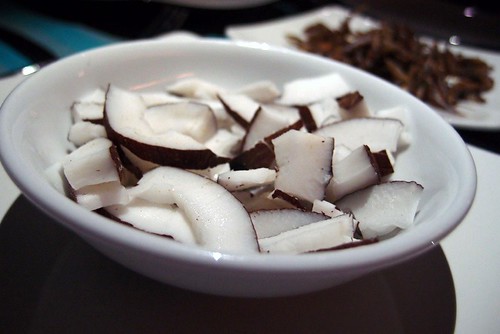
Kaashi / Coconut
Another simple yet tasty starter is the Kaashi. The natives of the Maldive islands have a local name for the Maldivian coconut – Thaavah Kaashi. Crunchy and sweet – a great appetite stimulant.
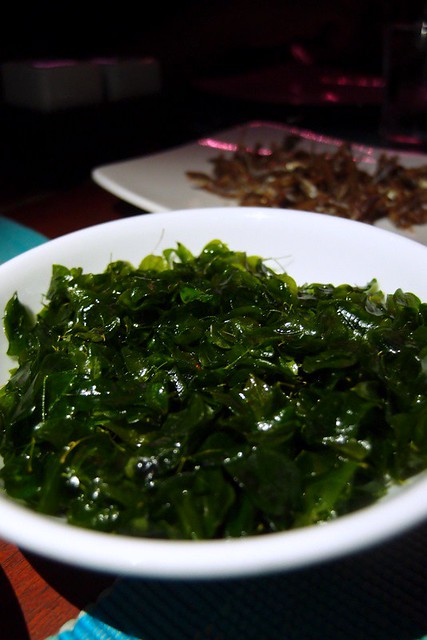
Thelli Fai / Fried Leaves
Another delicious side dish – the Thelifai its made by frying moringa leaves, dried chillies, garlic, and dried fish till nice and crispy.
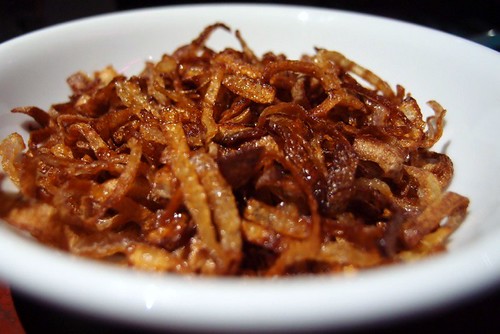
Theluli Fiyaa / Fried Onions
We noticed that the Maldivians eat a lot of fried onions. Adding these onions to the food just makes everything taste good! You can also eat it on its own, like chips and it’s hard not to get addicted to it. We also tried this black fish paste called Rihaakuru. The extract is the result of hours of cooking of tuna in water and salt, while carefully removing the scum that keeps forming. Once the tuna pieces are cooked and ready to eat, they are removed from the water, along with the bones, fish head etc. The pieces of Tuna, will eventually be cooked up later, as Maldive fish. The remaining “fish-soup” (Garudhiya – see below) is left behind with the ‘Bondi’ (balls of tuna scraps, scraped off the bones), and is kept boiling in low fire until most of the water evaporates. The resulting concentrated fish soup becomes a thick paste which is known as Rihaakuru.
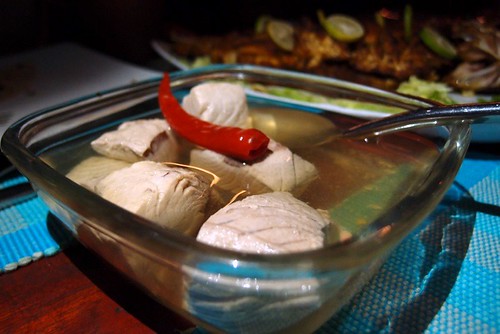
Garudhiya / Fish Soup
This fish is cooked with water, dried chili, onion & curry leaves. It goes superbly well with the Roshi or rice.
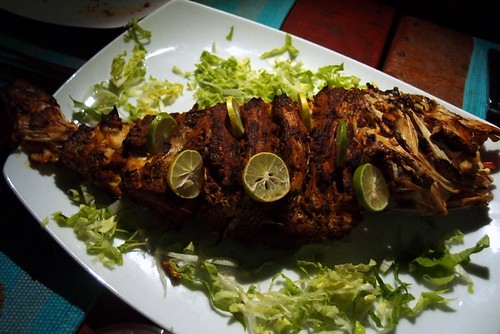
Fihunu Rai Mas / BBQ’d red snapper
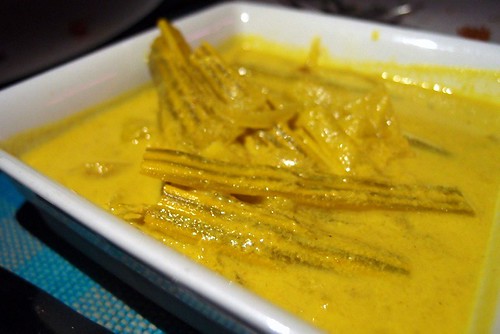
Muranga tholhi Riha / Drumstick Curry
This was one of the most interesting dishes we had that night. When our hosts said “drumstick”, I immediately thought of chicken curry. This drumstick however is not chicken but vegetable. If you see the word Moringa/Muranga and think it looks familiar, that is because the leaves are also deep fried and eaten as part of the Maldivian meal (see earlier photo). The immature green pods called “drumstick” are probably the most valued and widely used part of the tree. Wow.. all from the same plant.. how awesome.
It is considered one of the world’s most useful trees, as almost every part of the Moringa tree can be used for food or has some other beneficial property.

Fathu Satani / Green cabbage leave salad
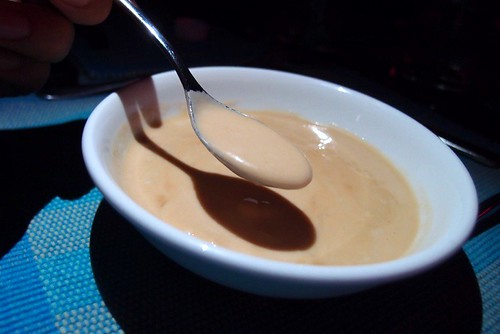
Kashi Keyo Creme / Screw Pine with cream
A big thank you to Faseeh (@phasy), for the fabulous meal at Sea House Cafe ,and to Sheraton Maldives (Peter, Ali, Solih and Shumaes) for organizing it!
Street Food in Malé on the night before departure
Maldivian food itself, is a fairly limited affair, consisting of fish, fruit and mild spiced curries. We got to sample authentic Maldivian cuisine in Malé again, on the last night, before our depature. The cooking style of Maldives is highly influenced by India and Sri Lanka. However, the spice usage is considered very mild compared to the rest of South Asia – not sure if it’s because of the preference of the Maldivian palate, or due to the cost of food. The things that I found fascinating were the short eats – some sort of bean and fish patties that are deep fried which resemble vadai (Indian savoury snacks), and also the betel nut the Maldivians chew at the end of the meals, that resemble the Malaysian sirih. Areca nuts are chewed with betel leaf for their effects as a mild stimulant, whereby they can cause a hot sensation and slightly heightened alertness, but the effects are mild, and could be compared to drinking a cup of coffee. The betel leaves are folded in different ways according to the country and most have a little calcium hydroxide daubed inside.
Maldivian Short eats
A simple but tasty meal of fish curry and roshi/chapati – note how they cut up the roshi into strips!
the grand finale.. areca nuts with betel leave and a little calcium hydroxide for that added kick!
Terrific Maldivian Street-food and hospitality.. thanks guys!
One of the best outings ever, and we learned so much about the Maldives, its people and cuisine. We hope to return one day soon to stay a couple of days in Malé as we have a lot more to see, and this trip though fun and a real eye-opener, was only just scratching the surface! We would love to return and spend more time on this vibrant island soon.
Some Photos that capture the essence of Malé!
speed boat from Sheraton Maldives, to Male.. just 10 minutes ride
alilfatmonkey and ciki on the way to Malé
the slower dhonis that take longer than speedboats but get you there anyway!
‘dhonis’ (traditional fishing boats) unloading dried fish, fresh fruits and vegetables from the atolls at the dock
Solih, our cheery guide showing us around Malé
Malé.. entering the dock
the jetty
contemplating life, at the jetty
Malé at dusk
the fish market
who will buy my fish?
kissing tuna
fresh tuna chops!
the vegetable market situated next to the fish market. You can buy Areca nuts here – those chewed with betel leaf for their effects as a mild stimulant
eat your greens!
A variety of salted fish for domestic consumption and export – Maldivian salted fish is less salty then the ones found in Malaysia. Being less salty, the natural flavors of fish was prominent. We nibbled on some and it is really tasty! Cumi’s favourite was the Salmon salted fish.
our terrific Maldivian meal at Sea house Cafe, to concluded the eye-opening Malé tour
all is calm, at the docks..
Previous posts on our trip to Maldives:
2. Chef in the Spotlight, Chef Sven Cepon of the Sheraton Maldives, Part 1
[mappress mapid=”59″]

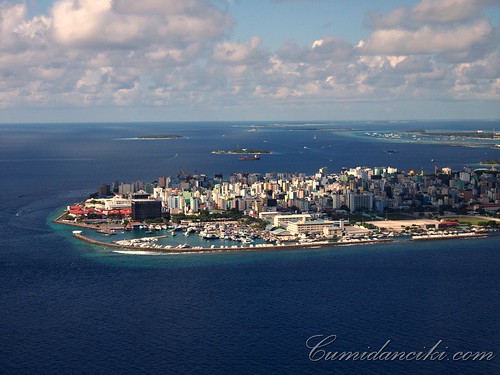
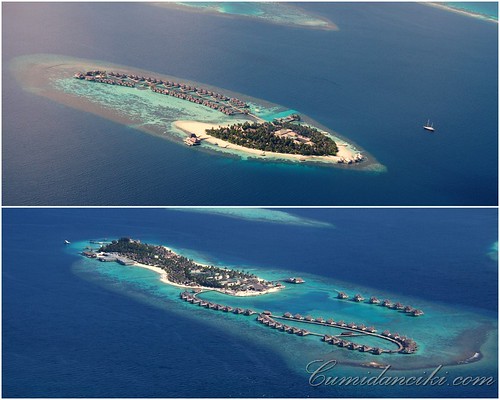
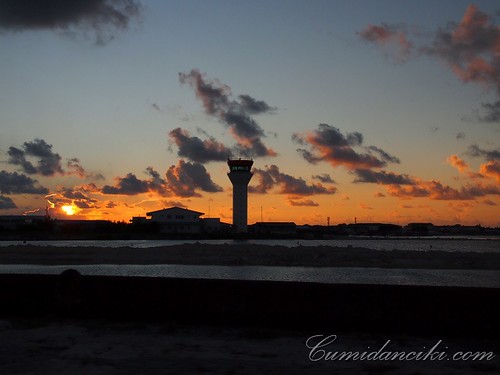
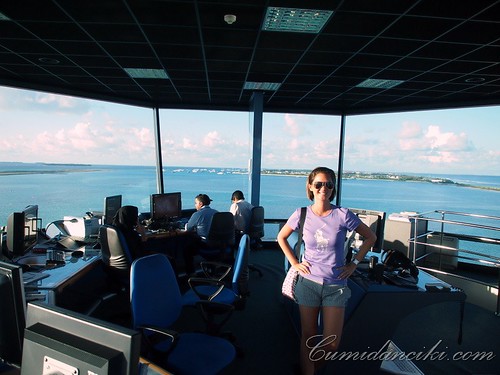
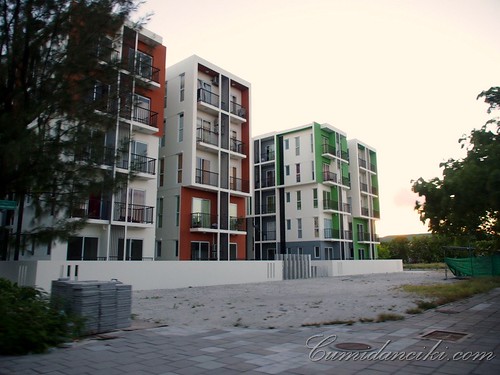
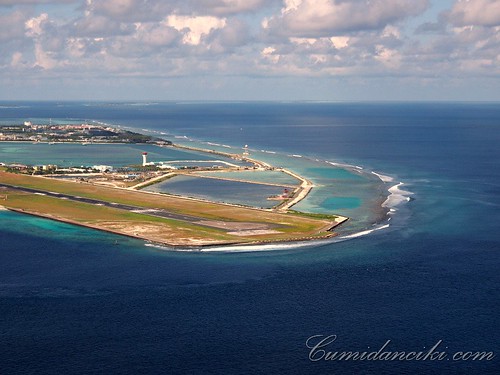

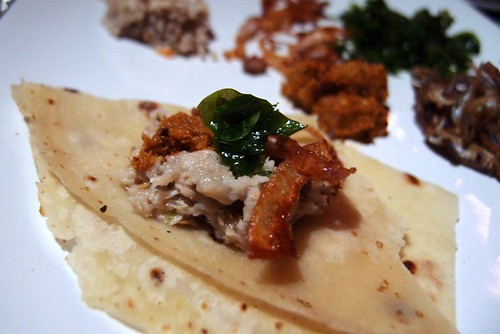
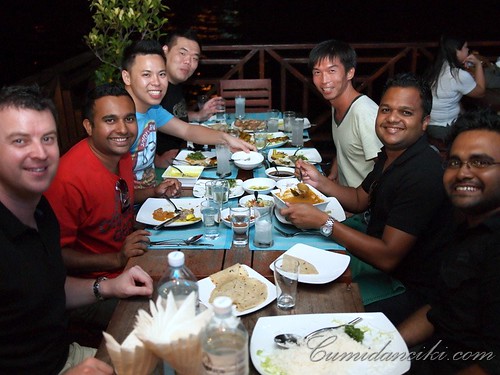
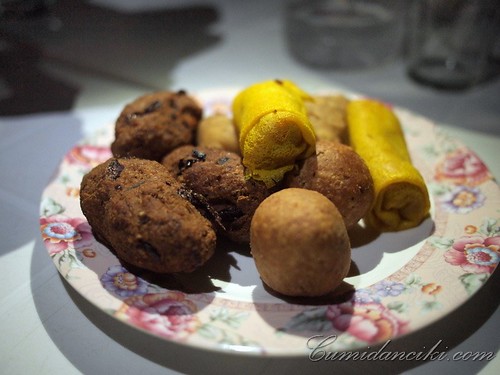
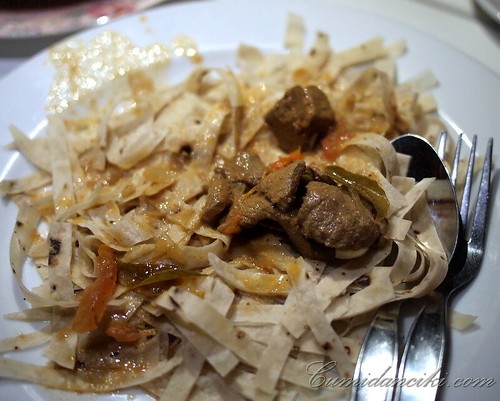
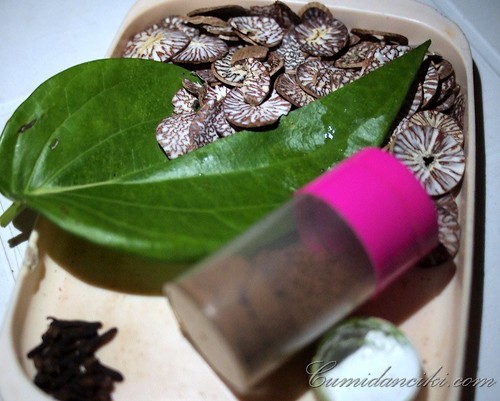
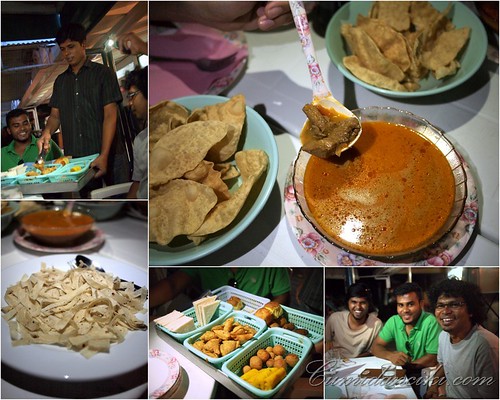
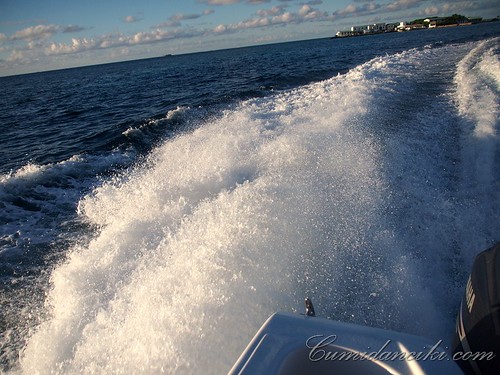
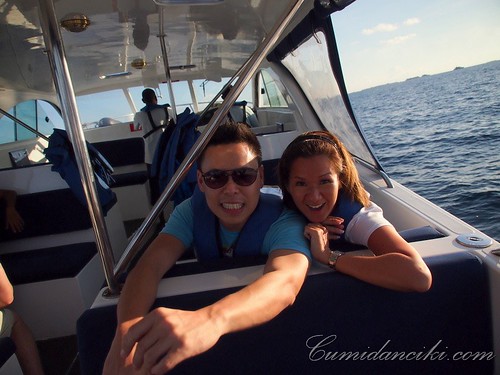
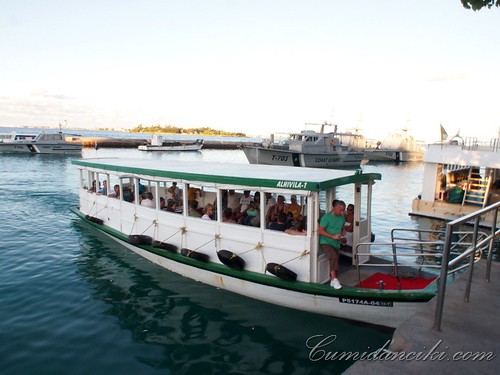
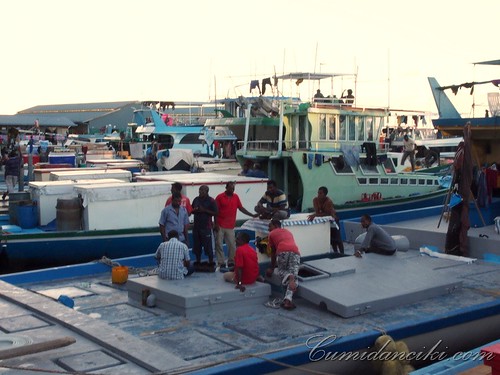
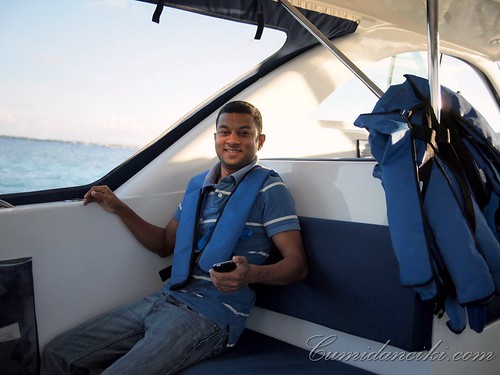
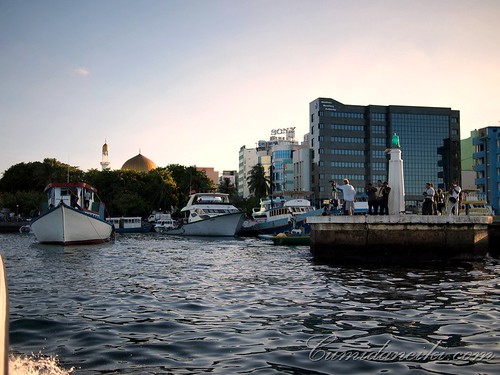
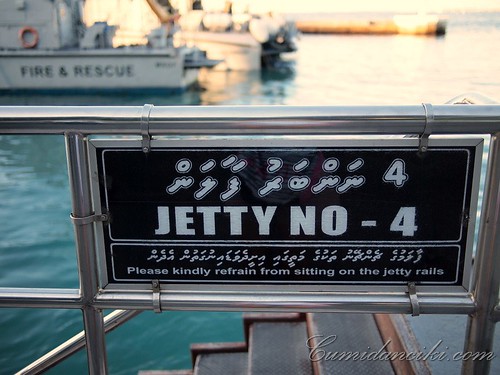
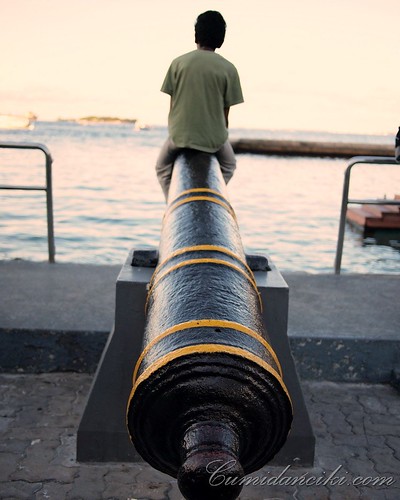
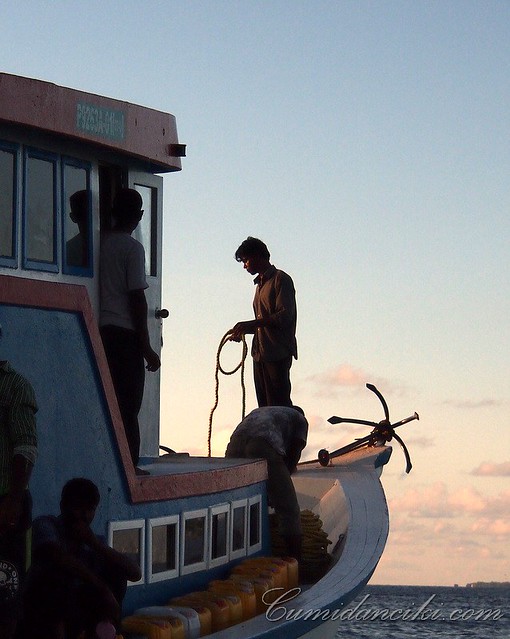
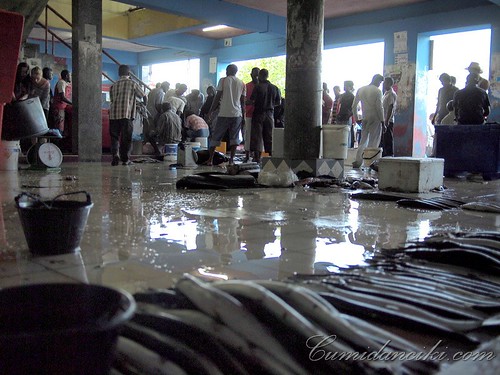
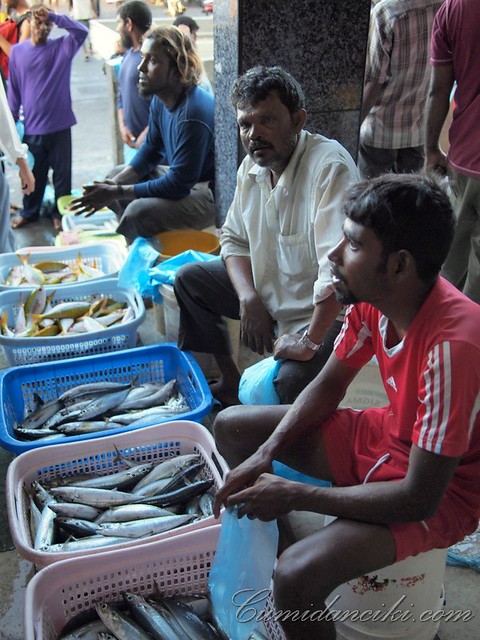
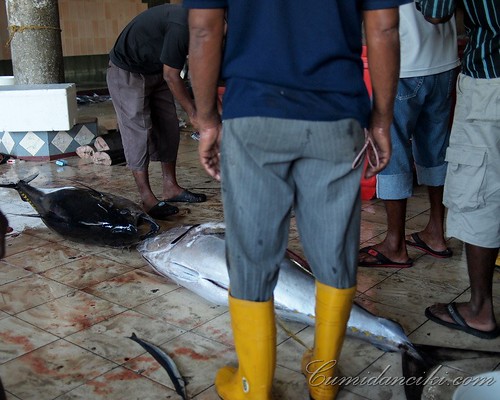

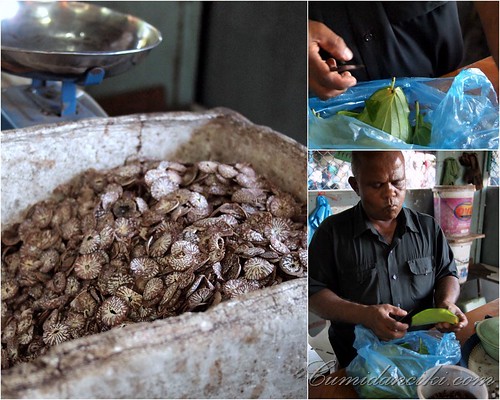
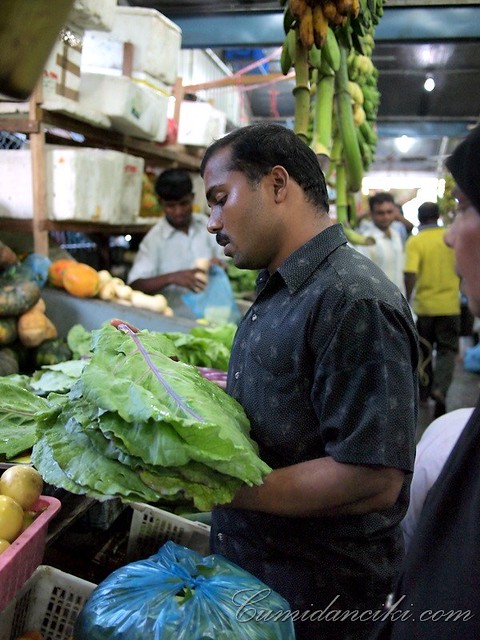
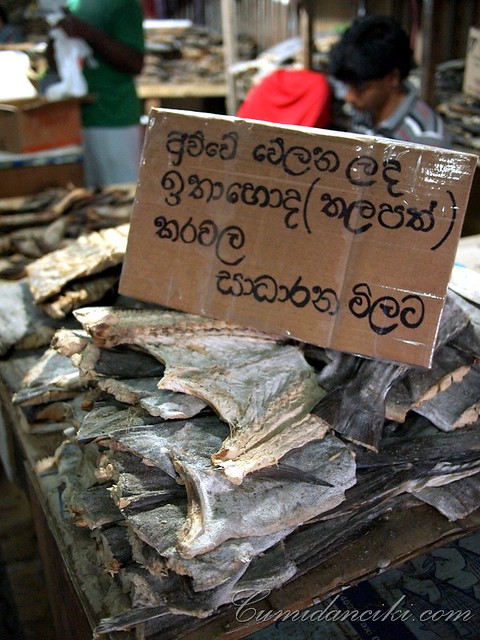

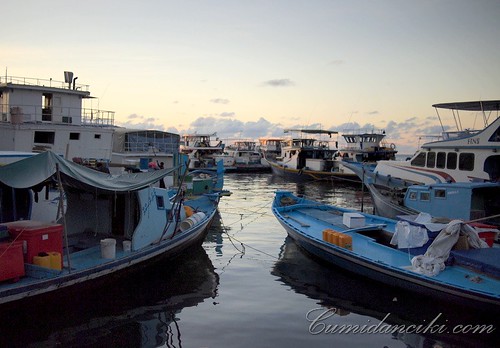





i say its a shame if you DONT eat the fish!
I say you are RIGHT! Freshest tuna ever.. and oh, the white fish.. to die for!!
such a beautiful place! i oso wanna goooo
KY, it’s like paradise!
That sure is a LOT of fish, hehe.
I love the pic of everyone at the dinner table. So many happy, happy smiles. Brilliant. 😀
Yeah, that’s what we look like, after a great meal yo!
My my my, look at the GIANT tuna! Makes me wanna eat it on the spot like sashimi 😛 Didn’t really go around Male during our last trip there since our island is quite far away (45mins boat ride) but it’s good enough to read about it here! 🙂
You can always do it, on the last day,when you return to the airport. It’s only 5 min by speedboat. W Resort was also far from Male mah.. 😉
So comprehensive your blog is. My interest is aroused. Simply need to go and experience Male.
Your photos are great – it really captures the essence of life in Male.
Maldives looks like the perfect place for a real getaway where you can relax. Love your writing. I’ll love to go to Maldives someday. 🙂
THAT’S IT! Next time you are having that much fun you have to bring your ninja along!!
Exquisite photos 🙂 Beautifully captured.
ps – That tuna shot looked like it was about to pop out of my screen. Gorgeous lar!
pps – Catch up with you guys when I am back in a week’s time!
Wow, amazing post – loaded with great information and incredible photos. I just got back to Bangkok from spending almost a month in Sri Lanka, so some of the food and culture looked similar. I would love to eat some of that fresh fish now!
hi, just hunting for maldives info… ur site really makes my mouth water… going to be there from 24th – 29th of Nov 2011… any tips for me as a first-timer? thx v v much!
Great photos! Especially of the fish. The Maldives is once place I’ve always wanted to go. It’s just so remote.
Thanks Stephen:) Yeah, great place.. we too need to go back and spend more time in Male!
Maldives and the food so exotic and beautiful. All the photos are really stunning!